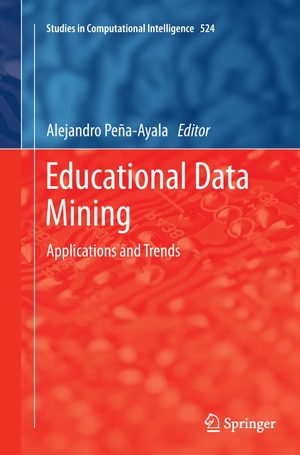Für statistische Zwecke und um bestmögliche Funktionalität zu bieten, speichert diese Website Cookies auf Ihrem Gerät. Das Speichern von Cookies kann in den Browser-Einstellungen deaktiviert werden. Wenn Sie die Website weiter nutzen, stimmen Sie der Verwendung von Cookies zu.
Cookie akzeptieren
Educational Data Mining
- Springer International Publishing
- 2016
- Taschenbuch
- 488 Seiten
- ISBN 9783319344997
This book is devoted to the Educational Data Mining arena. It highlights works that show relevant proposals, developments, and achievements that shape trends and inspire future research. After a rigorous revision process sixteen manuscripts were accepted and organized into four parts as follows: · Profile: The first part embraces three chapters oriented to: 1) describe the nature of educational data mining (EDM); 2) describe how to pre-process raw data to facilitate data mining (DM); 3) explain how EDM supports government policies to enhance education. · Student modeling: The second part contains five chapters concerned with: 4) explore the factors having an impact on the student's academic success; 5) detect student's personality
Mehr
Weniger
zzgl. Versand
in Kürze